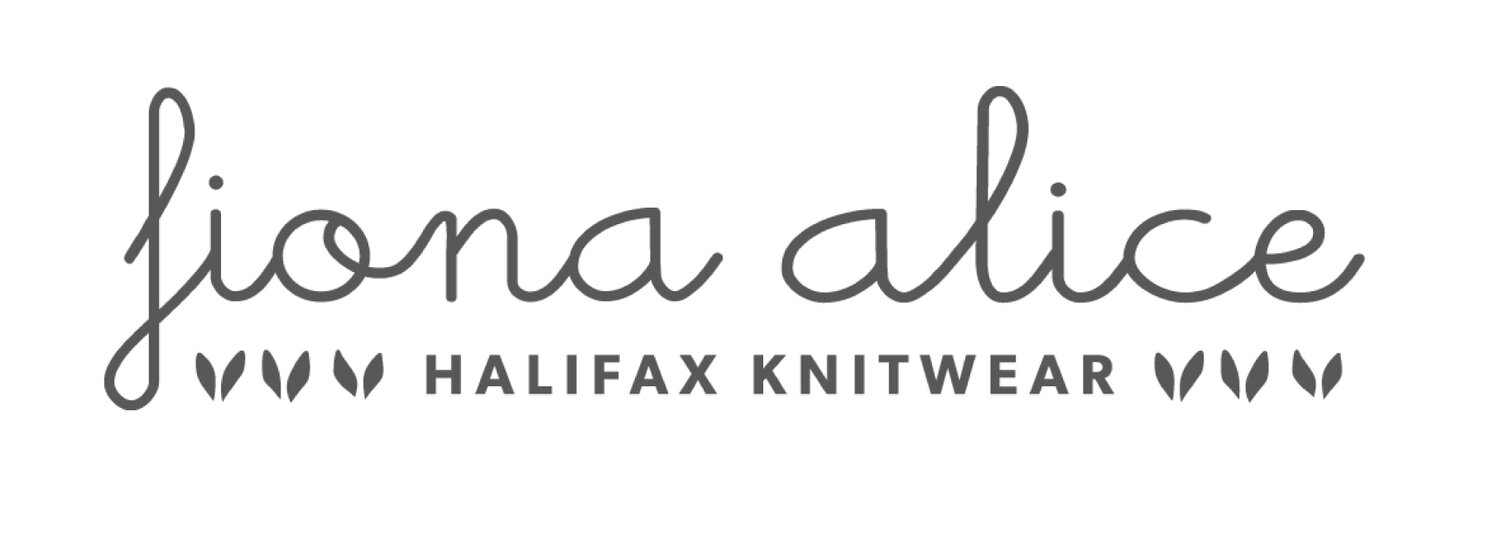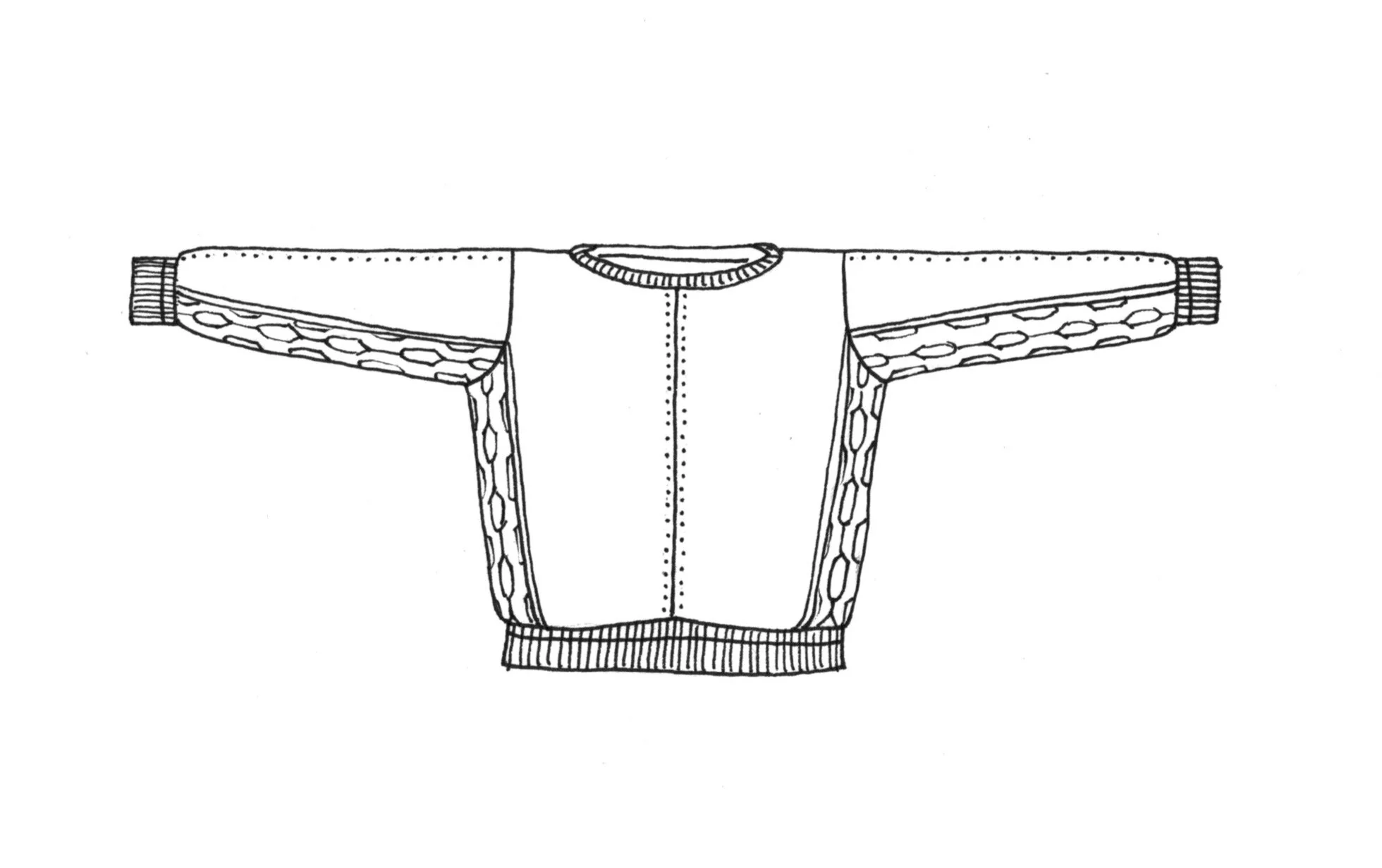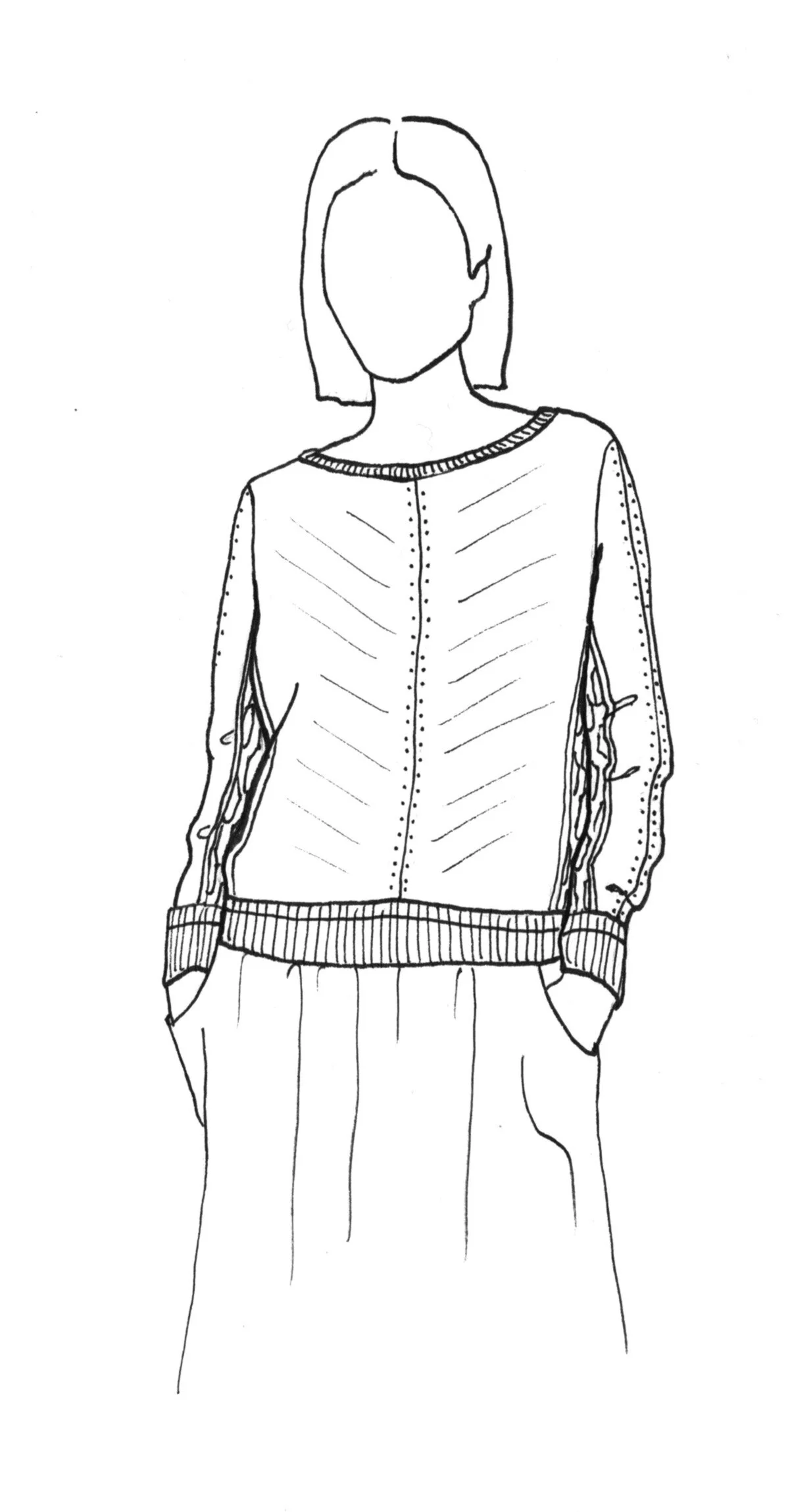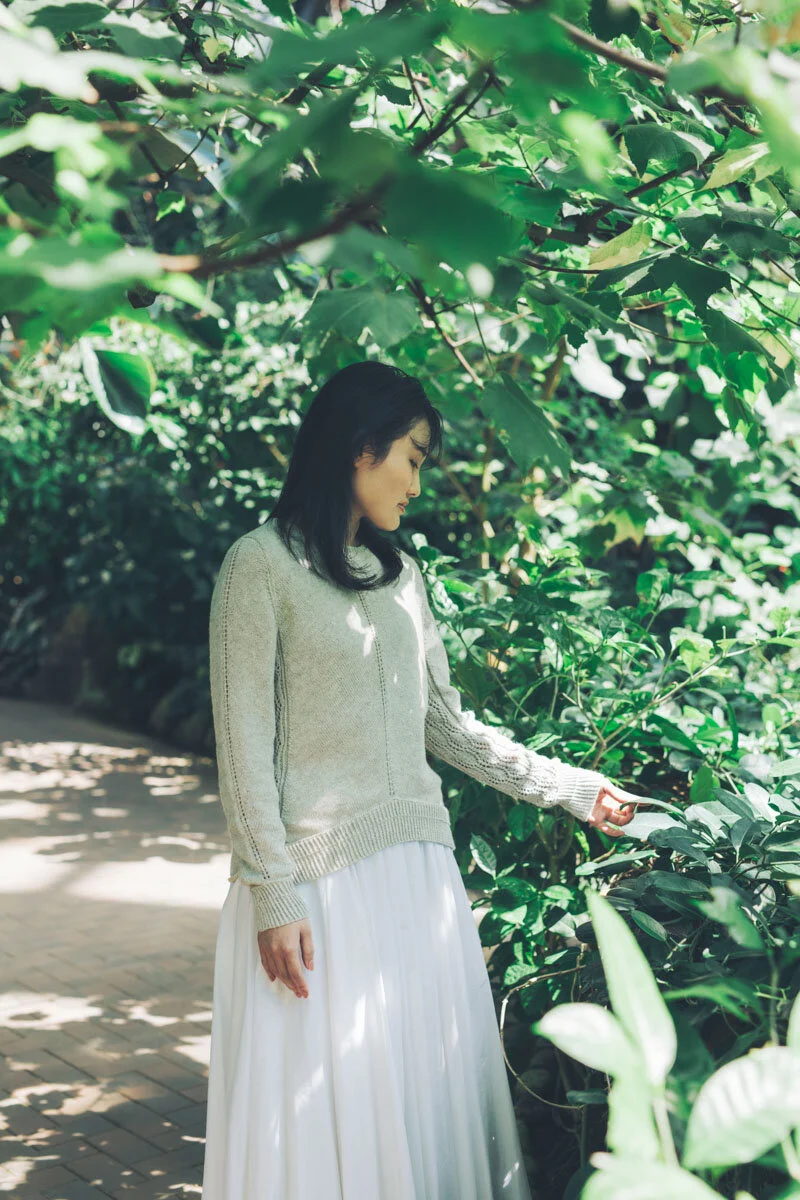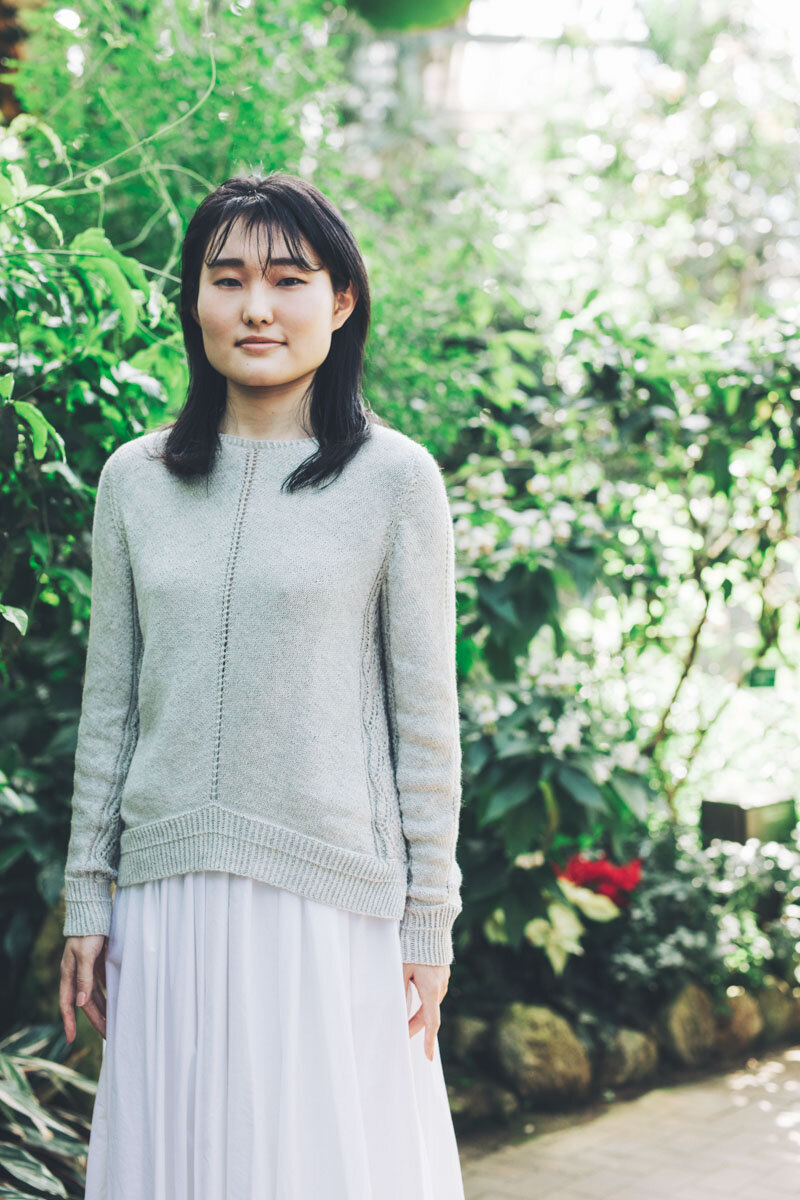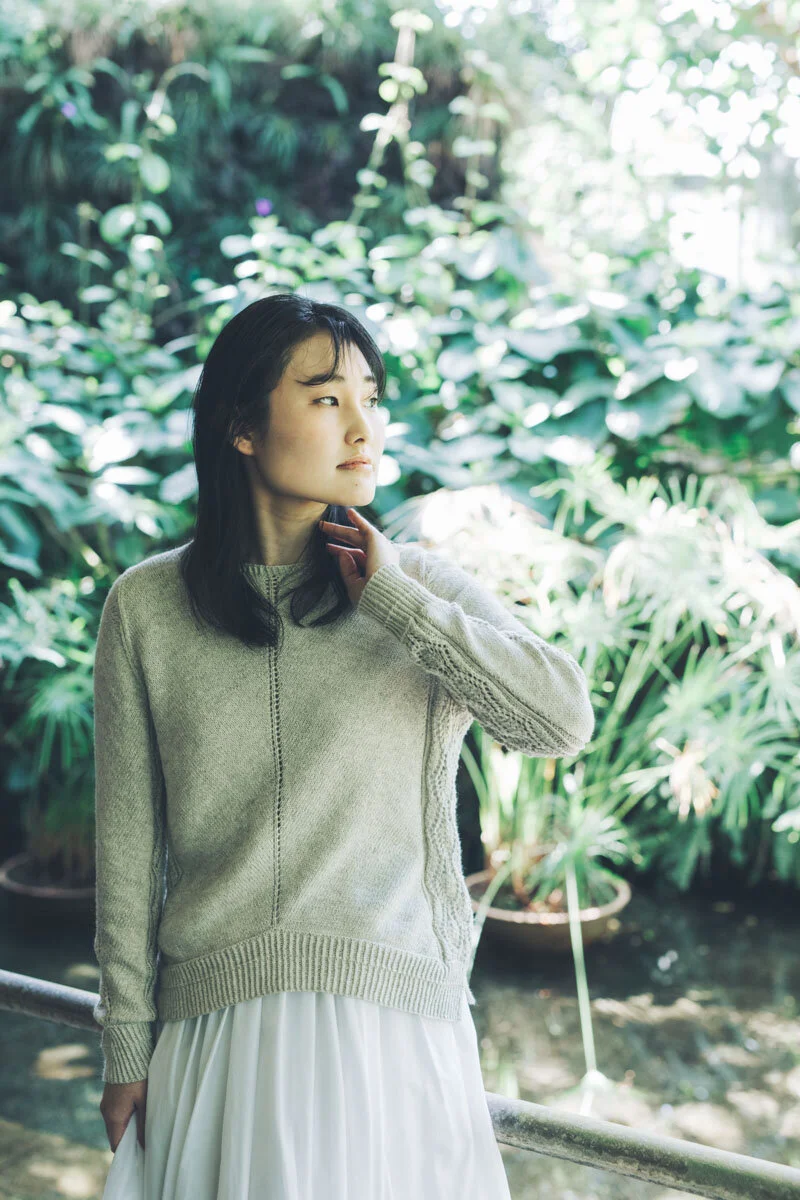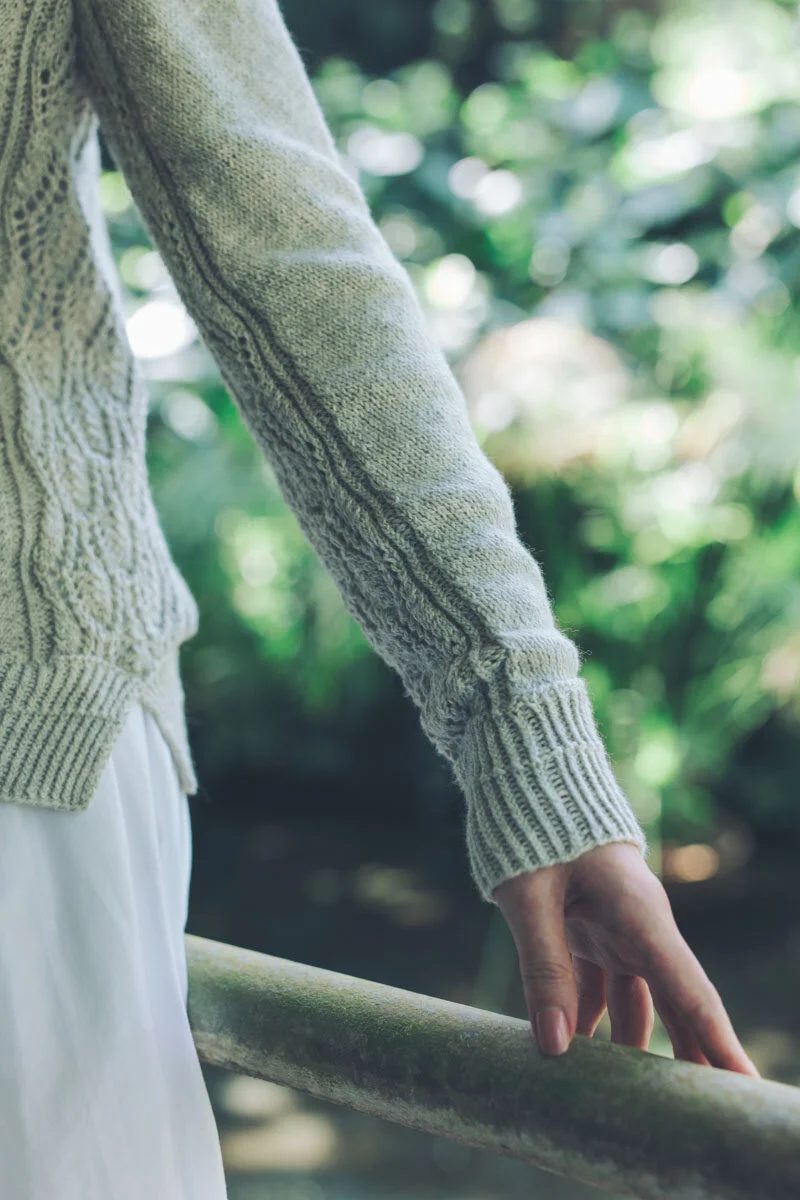Today, I will introduce you to my latest design with amirisu magazine. Stripe, colour work and lace fill the pages of Issue 22, as well as a beautiful craft guide to Okinawa. Due to Covid, the amirisu team decided to explore areas of Japan outside of the mainland. There are twelve knitting patterns inside and my contribution, Fay, is one of them. This summery collection is photographed in and around the Osaka Prefectural Flowers Garden and I am here for the lush green vibes after spending a winter indoors.
Now, before I get too carried away with the details on Fay, I wanted to mention that I’m hosting a pattern sale all of June for my previous published patterns in amirisu. It’s been nearly two and a half years since working with the amirisu team and in celebration of this new work, you can find these older patterns 25% off. Phōs, Fort Grey, Lumens, Gneiss, Lady Slipper and Lumi can be found in my pattern shop or on Ravelry and LoveCrafts. Sale runs until the end of June 2021.
For my Ravelry shop, click here.
For my LoveCrafts shop, click here.
Image from Pinterest.
Image from Pinterest.
Image from Pinterest.
Now on to the new stuff! Once again, I’ve pulled the images from amirisu’s mood board that first spoke to me. I found these three different textures of multiple layers really interesting and wanted to replicate them in my knitting in some form. I packed lot of texture into this design and hopefully I haven’t intimidated anyone. All the ribbing, lace and bias stocking stitch are repetitive and easy to memorize once you get started. I hope you like Fay as much as I do.
Original sketch.
Fay is a lightweight pullover that features three different textures. First up is the ribbing that starts off the design. I’ve chosen my favourite 1x1 twisted ribbing to use on the hem, cuffs and neckband. I added in a row of purling to break up the ribbing for some visual interest before continuing on. The hem is actually made up of two pieces to create two side splits.
Next up is the main texture on the front and back of the sweater. Which, I’ve been calling this bias stocking stitch. By adding the yarn overs in the centre of the sweater and decreases on either side near the lace, this combination creates your knit stitches to be slanted on a 45 degree angle. The same texture covers the top of each sleeve.
Last but not least is my favourite and unexpected element, the lace. These lace panels are on the sides of the sweater and underneath the sleeves. You can catch a glimpse of the lace when the wearer moves their arms. This particular pattern is called “Trellis-Framed Leaf”, which I found in Barbara G. Walker’s A Treasury of Knitting Patterns. I thought this repeating motif mimicked the shingle-like texture I liked from the mood board.
Original sketch.
As for construction, Fay is knit from the bottom up. The hem is started in two pieces and then the edges are overlapped to create the side splits. Afterwards, the body is worked in the round until the armholes are reached, then the front and back worked separately and flat. The body is completed by seaming shoulders together with the three-needle bind off method. Stitches are picked up along the neck to finish off with a neckband of twisted ribbing. The sleeves are worked separately and sewn into the armholes.
The sleeve construction is slightly different compared to most of my previous sweater designs. They are knit in the round, from the cuff to the beginning of the sleeve cap. However, once the sleeve cap is reached, the remainder is knitted flat. This way I was able to avoid a seam underneath the arm that otherwise would have interrupted the lace pattern. The sleeve cap is then sewn into the arm hole, very similar to when setting in a sleeve to a sewn garment.
Original swatches.
When it came to suggesting yarn for Fay, my thoughts were blank at first. I knew this design would be published in amirisu’s spring/summer issue and felt a lightweight cotton would be best. However, I don’t often knit with summery blends because the majority of my designs are published during the autumn and winter.
Since I was working with a few techniques that I don’t often use, like lace and bias stocking stitch, I wanted to make sure that I would be able to test out these elements first before sending off my proposal. Luckily, I was able to reach into my stash for a skein of Illimani’s Sabri I. A few years ago, while I was still living in Nova Scotia, I stopped in to visit a favourite yarn shop, The Mariner’s Daughter in Lunenburg. Shop owners, Hanna and Faye Wolse gifted me a skein of Illimani’s Sabri I, since it was new at the time and I’ve had it in my stash ever since. It even made the move to Helsinki with me!
Illimani’s yarns are some of my favourite blends to work with but those are usually warm and wintery alpaca yarns. Previous designs like Ceridwen, I Heart Handmade Mitts and Queensland Beach Headband all feature Illimani yarns. I’m thankful amirisu was interested in my suggestion and that I could use this lighter blend.
Sabri I is a beautiful summer blend, a 4 ply yarn made up of 85% organic cotton and 15% baby alpaca. The finished fabric is perfect for lightweight sweaters and shawls. The content of baby alpaca is soft against the skin and adds a beautiful drape to finished garments.
Sabri I originally came in seven natural shades but this spring Illimani expanded the colour range and released nine newly dyed colours. I’ll also mention here that Illimani has a yarn called Sabri II, a worsted weight version of this same organic cotton and baby alpaca blend. Just be careful when ordering yarn for Fay, not to get the two mixed up. It was a pleasure to knit with the 4 ply and I hope to use Sabri II in the future.
Photography by Masahiro Shimazaki.
Photography by Masahiro Shimazaki.
I’ll leave you with these gorgeous images of Fay from amirisu. While I eagerly wait with anticipation to start traveling again, I’ll venture over to my garden box at a nearby park to see what green things are growing in there. This is a new hobby and I’m absolutely lost but it’s been fun waiting to see what seeds pop up.
Fay Details
Yarn:
Fingering weight yarn
Approximately 1155 (1270, 1390, 1530, 1690) 1860, 2040, 2240, 2470 yards / 1055 (1160, 1270, 1400, 1545) 1700, 1865, 2050, 2255 m
3 (3, 4, 4, 4) 5, 5, 6, 6 skeins of Illimani Yarn Sabri I (85% Organic Cotton, 15% Baby Alpaca; 437 yards / 400 m, 100 g)
Sample is shown in 38 Light Grey
Needles:
A US 2 (2.75 mm) 32” / 80 cm (or longer) circular needle
A US 21⁄2 (3.0 mm) 32” / 80 cm (or longer) circular needle
A set of US 2.5 (3.0 mm) double pointed needles (DPNs)
Or, needles required to obtain gauge
Gauge: (after blocking)
29.5 stitches & 36 rows = 4” / 10 cm in Bias pattern with US21⁄2 (3 mm) needle (See Notes about measuring gauge.)
35 stitches & 45 rows = 5” / 12.5 cm in Lace pattern with US21⁄2 (3 mm) needle
Sizes:
Finished bust measurements: XS (S, M, L, XL) (2XL, 3XL, 4XL, 5XL) = 36 1⁄4 (40, 43 3⁄4, 48, 52) 56 1⁄4, 60, 63 3⁄4, 68” / 92 (102, 111, 122, 132) 143, 152.5, 162, 173 cm
The sample is in size S on a 5’3” / 160 cm tall model with 10”/25 cm positive ease at bust.
Tools:
Stitch markers(6), tapestry needle, stitch holders or waste yarn, a spare US 2 (2.75 mm) or smaller circular needle
Photography by Masahiro Shimazaki.
Photography by Masahiro Shimazaki.
Thank You
Publisher: amirisu, @amirisushop
Model: Fuko Inada, @a_x_taro
Photography by: Masahiro Shimazaki, @masahiro_shimazaki
Yarn Support: Illimani, @Illimani
Photography by Masahiro Shimazaki.
